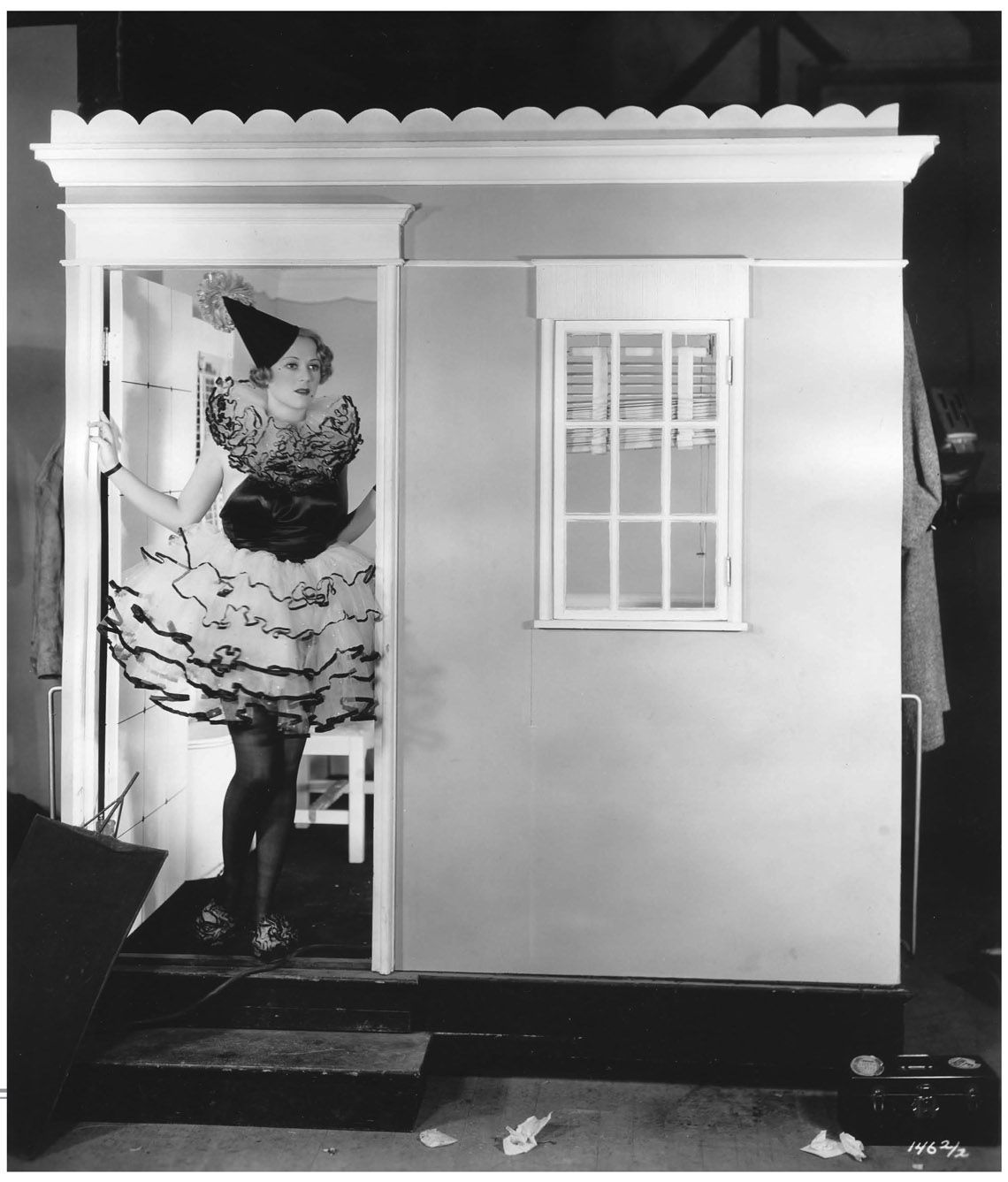
My interest in the Twentieth Century Fox Studio started with a visit to the lot. Unfortunately, my visit didn’t take place when the studio was Zanuck’s playground—when the backlot was still intact.
No, my first visit came three decades later, in the mid-1980s.
As I entered the studio entrance off Pico Boulevard, I was thrilled to see the famous Hello, Dolly! set from 1968, still standing in all its faded glory. Back in those days, the guard shack was way up by the administration building, so you could park and walk around about 70 percent or more of that amazing set without a studio pass. But after an hour or two of exploring, I wanted to see more.
Several months later I came back, this time I went to examine the rest of the Hello, Dolly! set, discover the inside of the Café de Paris, inspect remnants of TV’s Peyton Place set and the Gotham City Plaza set from TV’s Batman, explore a Western street used in Butch Cassidy and the Sundance Kid, and then end my visit in the auditorium of the Darryl F. Zanuck Theatre.
Yet, as informative as that day was, I still wanted to learn more.
So years later I jumped at the chance to be part of the Friends of Fox campaign, set up to illustrate for the studio neighbors the positive benefits of an expanded and refurbished studio versus a massive cluster of upscale condominiums and the heavy traffic associated with them. We were given a tour of the studio, lunch in the Café de Paris, and an impressive packet of well-researched information on the studio’s history. Despite all that, I still wanted to learn more about the studio—specifically, about the famous backlot, now fully consumed by Century City real estate development.

Original 1934 caption: “DOLL HOUSE—Sally Eilers at the door of the doll house-like dressing room which, moved from stage to stage, saves her many steps and the studio much time which, otherwise, would be taken up by trips to her permanent dressing room suite. She is shown here in one of the costumes she wears in Fox Film’s 3 On A Honeymoon.” The cute dressing room hung around for years.
That desire motivated me as I helped do some of the research for this book. I learned more than I ever imagined possible.
Here is a small sample:
Movie industry pioneer and dynamo William Fox invented the star system, championed an early sound-on-film technology that became the industry standard, and created a chain of beautiful movie palaces, with many still in use today. Darryl F. Zanuck was the most talented of the Hollywood movie moguls, a unique combination of M-G-M’s Louis B. Mayer’s administrative skills and Irving Thalberg’s artistic sensibilities. Zanuck’s military-service experience during World War II made him more in touch with the changing tastes of postwar movie audiences. He lived to see the death of the powerful studio system he’d had a major role in creating, and while the movie studios fought home video for years, Zanuck correctly predicted the big profits it would deliver.
By sheer size and scope, Twentieth Century Fox had the best backlot of the Hollywood studios, and it housed the most authentic and extensive of the standing exterior sets. The studio made successful movies with adult themes, including economic inequality, anti-Semitism, bigotry, and mental health. Yet at the same time, they also excelled in big, glossy Technicolor musical extravaganzas. And when the box office started to wane with competition from television, they successfully reinvigorated moviegoing with the introduction of wide-screen CinemaScope.
Contrary to popular belief, the studio had originally planned to develop their backlot into Century City themselves, and only after a series of financial mishaps were they forced to sell it to outside developers.
I learned from legendary Marilyn Monroe photographer Lawrence Schiller that to help create the infamous Monroe hip-based sashay, Marilyn had an eighth of an inch shaved off the heel of her right shoe!
It has been an amazing journey of discovery. I hope that between the covers of this book, you, the reader, will experience and enjoy an interesting journey of discovery as well.
A book of this scope and magnitude requires the collaboration of many, and a small army helped make it all happen. Michael Troyan and his single-minded passion for classic movies and movie stars brought multiple layers to this endeavor. Living in Hollywood, I have met many classic movie lovers over the years, but none match Mike’s focused obsession. Fox archivist Jeffrey Thompson was a constant support and supplier of material that only a studio archivist would know where to find.
Many thanks to Jaime Larkin at the Motion Picture & Television Fund, Ray Courts, Oscar Arslanian, Don Berry, Joel Rogosin, Fabian Forte, Don Murray, Leslie Mann, Marlene Sharp, Austin “Rocky” Kalish, and Irma Kalish. Final round of gratitude goes to Hope M. Parrish, Dennis J. Parrish, Fred J. Koenekamp, Joseph Musso, Mike Malone, Kari E. Johnson, Robert Vaughn and the American Film Institute, Christy Johnson McAvoy and Historic Resources Group, Escott O. Norton and the Los Angeles Historic Theatre Foundation, Keith C. Anderson, Brian Leon and Yale Film & Video, Stacey Behlmer, David Greim, Robert J. Holmes, Ruth A. Holmes, Paul A. Grimm, and Edward M. and Bobbie Johnson.
And last, but certainly not least, thanks to Twentieth Century Fox for supplying a century of entertainment.
Cheers!
Stephen X. Sylvester